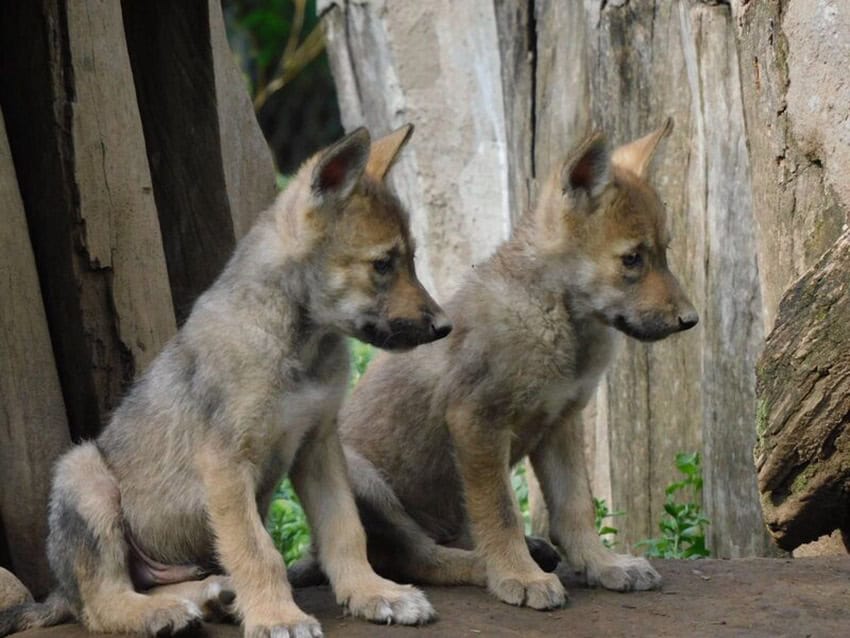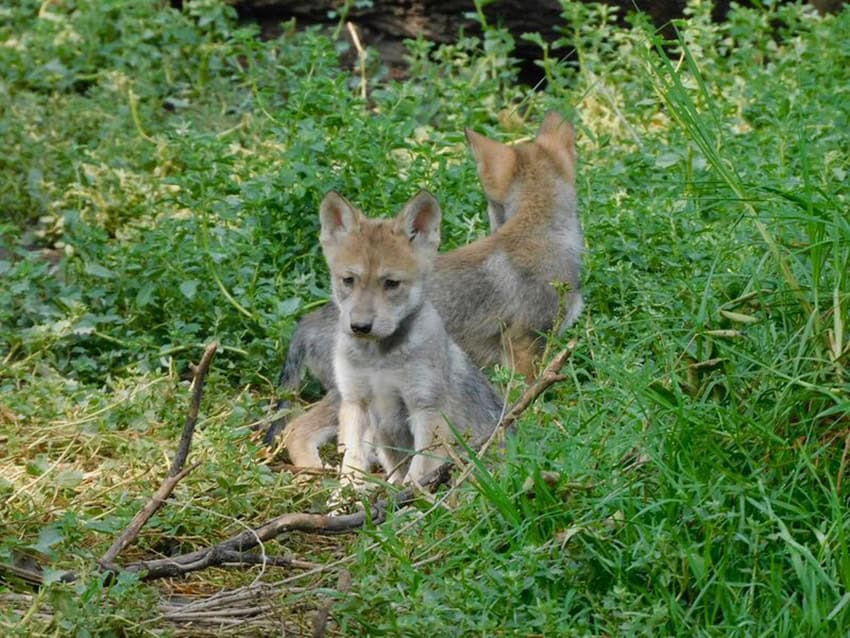Four Mexican wolf pups, two males and two females, were recently born at the San Juan de Aragón Wildlife Conservation Center in Mexico City, according to the city Environment Ministry (Sedema).
The birth of the pups represent a key advance in the conservation of the Mexican wolf, a subspecies of gray wolf, which virtually disappeared from the American landscape during the 1970s.

However, thanks in part to the contribution of the Wildlife Conservation Centers of Mexico City in 2019, the Mexican wolf is making a comeback and now once again lives wild in Arizona, New Mexico and Chihuahua.
Since 1978 to date, this program has achieved the birth of 194 Mexican wolf pups. In 2019, Mexico reclassified the subspecies from the category of “probably extinct in the wild” to “endangered.”
The newest pups were born April 21 and left the burrow for the first time on May 21 under the care of their parents, a pair selected for their high genetic value.
The pair was specially transported from Tamaulipas and the Tamatán Zoo as part of the Mexico-United States Binational Conservation Program. According to reports, the wolves arrived at the center on Dec. 5, 2024, and displayed reproductive behavior in February.

In the coming days, the pups will receive a comprehensive health check including genetic testing to ensure a healthy and stable future for the Mexican wolf population.
Sedema has said that the pups are not on public display, as they need to be isolated from human contact to facilitate their incorporation in the wild.
“The goal is to achieve a genetically healthy and numerous population under professional care, capable of sustaining reintroductions to wildlife, achieving a wild population within its historical distribution range,” Sedema said.
Endemic to northern Mexico and the southern U.S., the gray wolf weighs 60-80 pounds and stands 26-32 inches high at the shoulder. This subspecies of the gray wolf lives in packs that usually include an adult pair and their offspring. Thus, the death of one individual severely impacts the entire group’s ability to hunt and therefore sustain itself.

This subspecies is the most genetically distinct among its canine relatives. It’s also inbred due to its near-extinction in recent decades — the entire population is descended from just seven individuals, making Mexican wolves more susceptible to disease and less able to adapt to their changing environment.
Despite those challenges, the population is slowly increasing with captive breeding programs like the one in Mexico City. The birth of the Mexico City pups is a step toward a stronger, healthier wolf population that can survive, and maybe even thrive, on its own in the wild.
Mexico News Daily
